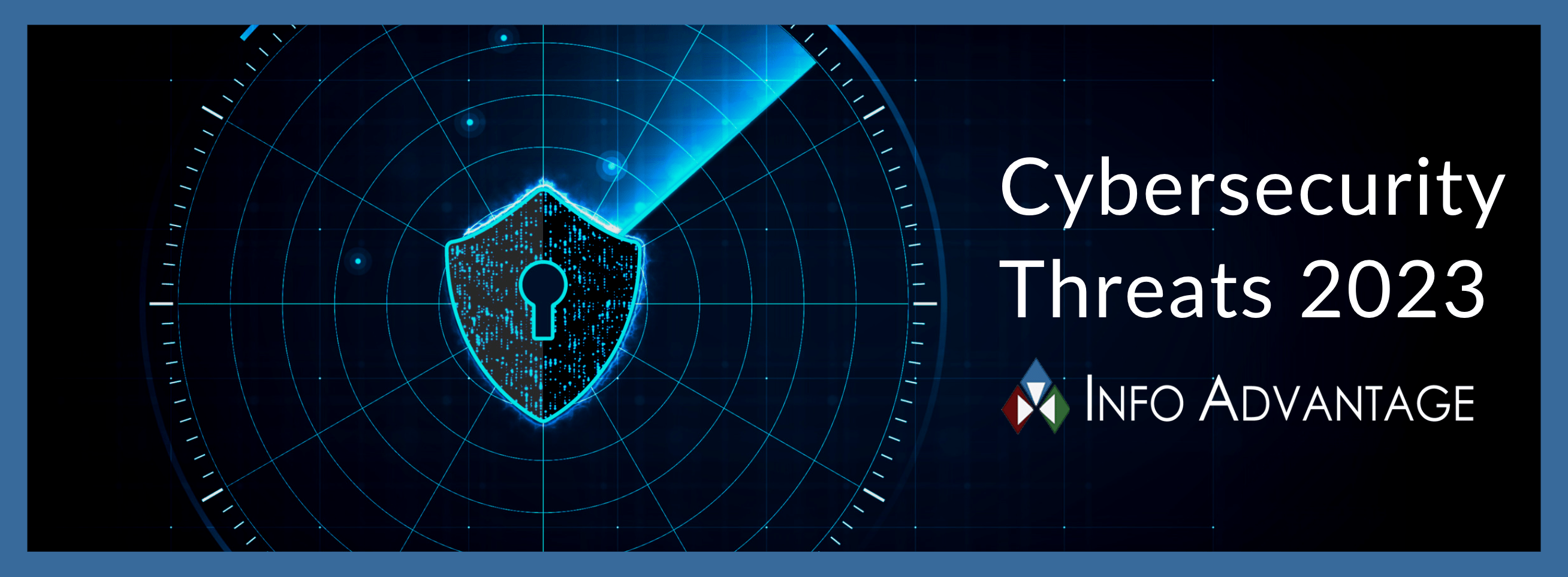Info Advantage Blog
The Biggest Cybersecurity Threats In 2023

Cybersecurity threats are constantly evolving, and businesses need to be aware of the latest ones in order to effectively protect themselves. In 2023, some of the biggest cybersecurity threats to businesses include:
Phishing: Targeting the human element
In 2022, phishing was the most reported cybercrime, with 300,497 complaints. IBM’s Cost of a Data Breach 2023 report also found that phishing is the second most common way that hackers gain access to a company's IT system.
Phishing is so successful because it targets the human element. Humans are naturally inclined to trust emails and text messages that appear to be from a legitimate source. This is why phishing emails are often designed to look like they are from a company that the victim does business with, such as their bank or credit card company.
To defend against phishing, companies should conduct regular awareness training sessions. During these sessions, employees must learn about the different types of phishing attacks, common signs of a phishing email, and steps to take if they receive a phishing email. Businesses should also run phishing simulations to test their employees' ability to identify and report phishing emails.
Ransomware extortion: A growing cyberthreat
Ransomware attacks have evolved in recent years, incorporating double extortion tactics that make them harder to detect and more damaging. In the first quarter of 2023, cybercriminals launched ransomware attacks on 1 in 31 organizations worldwide. This statistic underlines the importance of regular data backups and proactive security measures. When businesses are prepared for any eventuality with a data recovery solution, they can shield themselves from the impact of ransomware attacks without succumbing to the demands of cybercriminals.
Wipers and destructive malware: An unseen danger
Wipers and destructive malware are a growing threat to businesses. These types of malware are designed to delete or destroy data, making it irretrievable. This makes wipers and destructive malware even more damaging than ransomware, which makes data inaccessible by encrypting it.
To protect against wipers and destructive malware, businesses should implement comprehensive cybersecurity measures, including firewalls, anti-malware software, and round-the-clock threat monitoring and detection.
Cloud-based threats: Guarding data in the cloud
In 2018, the Software Engineering Institute of Carnegie Mellon University identified 12 risks, threats, and vulnerabilities in cloud computing, which are all still relevant today as businesses continue to adopt cloud computing.
As cloud adoption surges, organizations must be vigilant against unfamiliar cloud security practices and shared security model risks. They should also enhance security protocols, foster cloud awareness in their organization, and partner with trusted cloud service providers (CSPs) to safeguard against cloud-based vulnerabilities and threats. Businesses do not need to worry about moving their data to the cloud when they have experienced CSPs to guide and guard them.
Mobile malware: A rising menace
Mobile devices and apps are ubiquitous tools that everyone has adapted to. This has led to an increase in mobile malware, which poses a serious danger to businesses.
To protect themselves, businesses must educate employees about the risks of mobile malware and enforce security measures so that they can thwart malicious attempts to infiltrate their mobile devices. They should also use a mobile device management (MDM) solution to better control and secure mobile devices. MDM allows businesses to easily enforce security policies, track device usage, and remotely wipe data that’s stored in stolen or lost devices.
Zero-day vulnerabilities in supply chains: A vulnerable link
Zero-day vulnerabilities, which take advantage of unknown and unpatched software flaws, can be exploited by cybercriminals.
To defend against these threats, businesses should employ proactive security measures, such as network segmentation, intrusion detection systems, and continuous monitoring. Timely threat intelligence sharing within the cybersecurity community can also aid in detecting and mitigating zero-day attacks swiftly.
To fortify your defenses against the ever-changing cyberthreat landscape, it’s best to partner with a reliable IT security provider like Info Advantage. We have decades of experience in providing top-notch IT services and solutions and we can implement security measures tailored to your company’s specific needs. Get in touch with us today.
Comments
Tag Cloud
Mobile? Grab this Article




